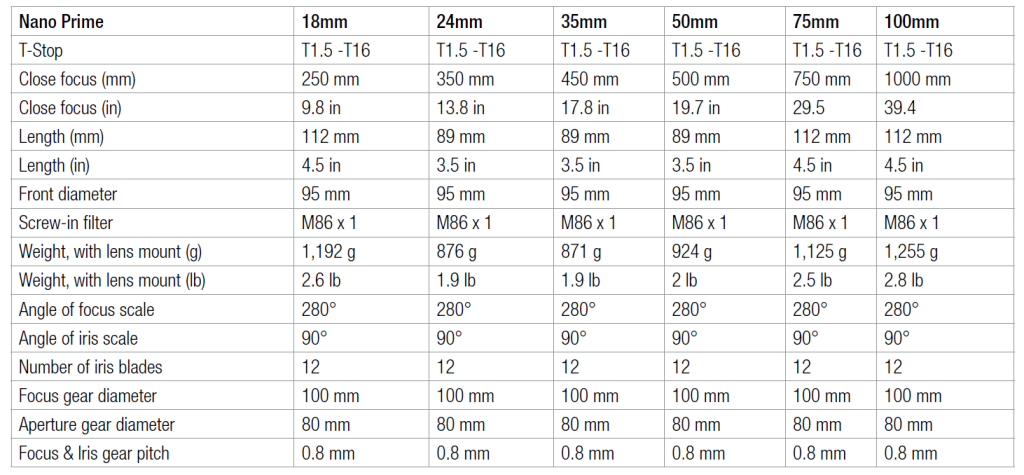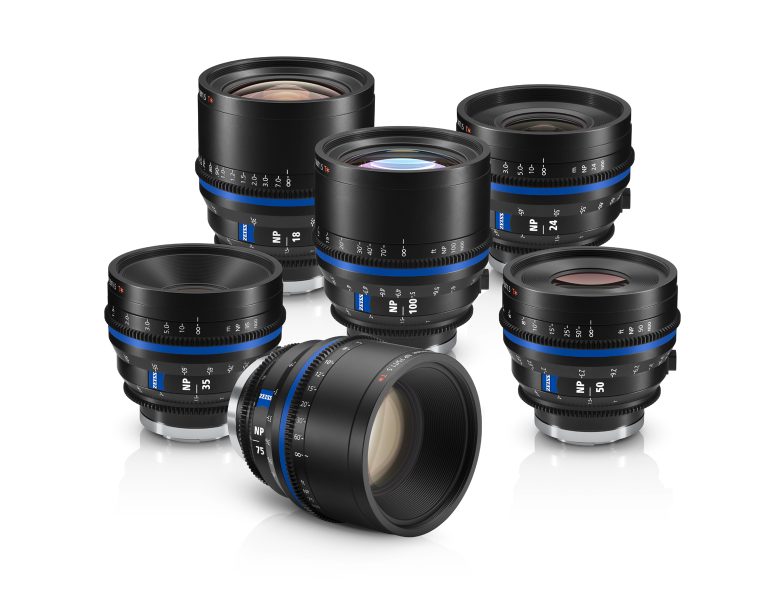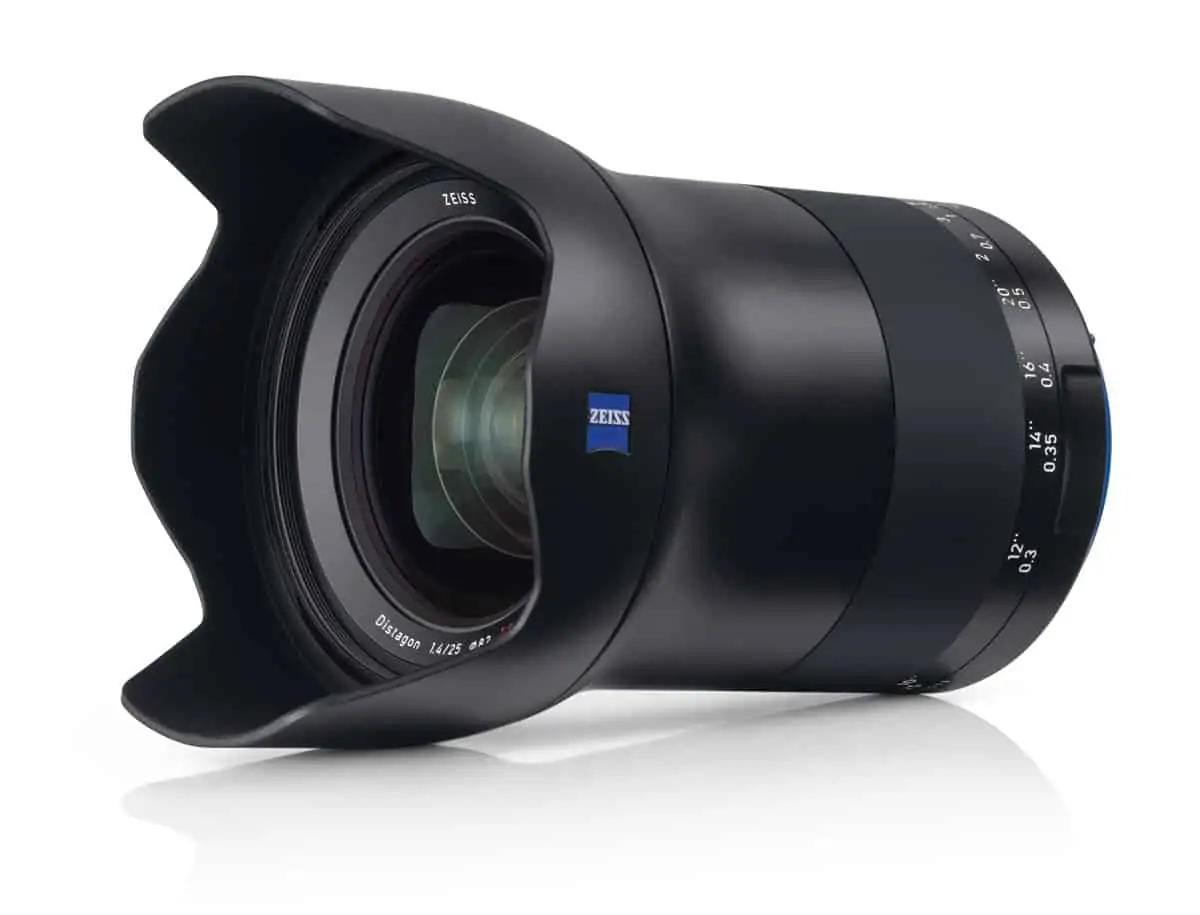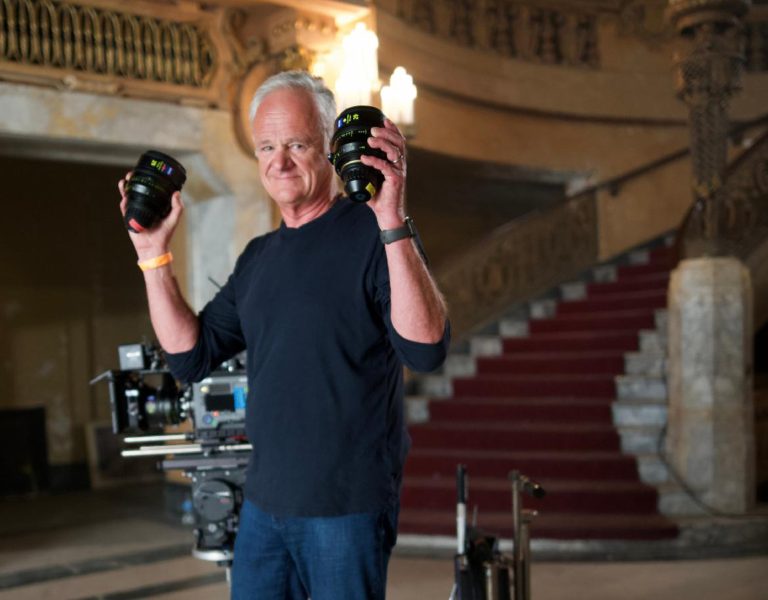ZEISS introduces the Nano Prime family of high-speed cine lenses for mirrorless full frame cameras, combining a cinematic look with a lightweight and compact design.
ZEISS Nano Primes are the first high-speed (T1.5 throughout) cine lenses made specifically for mirrorless full frame cameras – initially available with Sony E-mount. These primes offer a pleasing, versatile look that is adaptable for an extensive range of shooting situations and a compact, lightweight design that makes them easy to use on any set or location. Available in six focal lengths (18mm, 24mm, 35mm, 50mm, 75mm, 100mm), this matched set conveniently covers wide-angle to telephoto.
Versatile cinematic look
ZEISS developed the optical design of the new Nano Primes specifically for mirrorless film cameras. Christophe Casenave, responsible for Cinematography Products at ZEISS, explains: “Thanks to the close focusing distance and the high speed of T1.5, Nano Primes enable images with an extremely shallow depth of field, even in the wide-angle range. The elegant bokeh and the harmonious focus fall-off ensure a versatile look that meets different artistic requirements, whether for indie productions, documentaries, commercials, series, or feature films.”
The universally applicable look can also be combined with the high-end lenses of the Supreme Prime family. Casenave adds, “With a similar gentle sharpness and aesthetic focus fall-off, the Nano Primes are an ideal complement to the Supreme Primes and, in combination, are also ideal for B and C cameras and lower-budget productions.”
Compact and lightweight design with familiar cine ergonomics
With their light weight and professional handling, Nano Prime lenses are designed to fit right into established film crew workflows. Thanks to the compact design along with the usual ZEISS quality, the lens family can be used reliably in dynamic or constricted shooting situations, even under adverse conditions. Consistent positioning of the focus and iris rings across all focal lengths ensures quick and uncomplicated lens changes. The calibrated focus scales are easy to read and a long 280°focus rotation aids precise focus pulling. In addition, the iris ring features 90° rotation and a non-linear scale to enable fine aperture adjustment.
Flexibility through integration of lens data and interchangeable mount
Thanks to the integrated electronic interface, metadata such as focal length, focus distance and aperture value are transmitted to the camera in real time. Additional lens data for distortion and vignetting is available in the ZEISS CinCraft ecosystem and thus for post-production (CinCraft Mapper) as well as in the recently introduced CinCraft Scenario camera tracking system. Adding to their versatility, Nano Primes are ready for the simple exchange of additional mounts thanks to the proven ZEISS IMS (Interchangeable Mount System).
“With the Nano Primes,” concludes Casenave, “we are closing the gap between entry-level and high-end lenses, enabling all filmmakers to create a cinematic look even in this price segment.”
ZEISS Nano Prime Specs

Casenave shared one of the challenges in the design. “We didn’t want these lenses to compete with CP.3 because I still believe strongly that CP.3 are super lenses. If you want to shoot with ARRI cameras, which have PL or LPL mounts, but you are on a limited budget, then you have the CP.3 Primes in PL mount. We also did not want the new Nano Primes to compete with our Supremes. Rather, we wanted them to complement the Supremes, with a look that is similar or that goes in the same direction. The look of Supremes is well appreciated. We realised that the Nano Primes would be ideal on productions that could not afford Supremes or, perhaps they needed something smaller and lighter. So that’s how we designed the lenses, defined the look and established the optical parameters”.
Thomas Steinich is the lead optical designer on the ZEISS Nano Prime project:
What sets the ZEISS Nano Primes apart from other cine lenses is their incredibly compact size, both optically and mechanically. Specifically designed for the E-Mount interface, the Nano Primes take full advantage of the short flange focal distance to achieve their small size. Additionally, they are designed to cover the entire Full Frame sensor, which is a step up from the Super35 MPs, UPs, and MAs. Despite their small size, the Nano Primes are still able to offer a very fast lens speed. The T* coatings are the same as those found on the Supremes, ensuring that performance was not sacrificed in order to keep costs down.
Dennis Meyer is the systems engineer on the ZEISS Nano Prime project:
From the onset, the goal was to create a true cine lens for E-Mount, without any compromise or hybridisation with stills lenses. This presented a significant challenge in designing a compact housing that could accommodate typical cine gears for focus and aperture, which had to be positioned uniformly across all lenses to facilitate easy on-set lens changes. Additionally, large rotation angles and standard front diameters were essential requirements. After much effort and with a completely new mechanical design, these goals were finally achieved, and the lenses passed all of ZEISS’s strict quality and environment tests, including rapid heat changes, hot and cold temperatures, and mechanical shock, among others. The Nano Prime Lenses have already generated significant buzz in the industry, and their unique features and capabilities are sure to make them a popular choice for filmmakers.
The ZEISS Nano Prime Lenses are available from May 2024.










